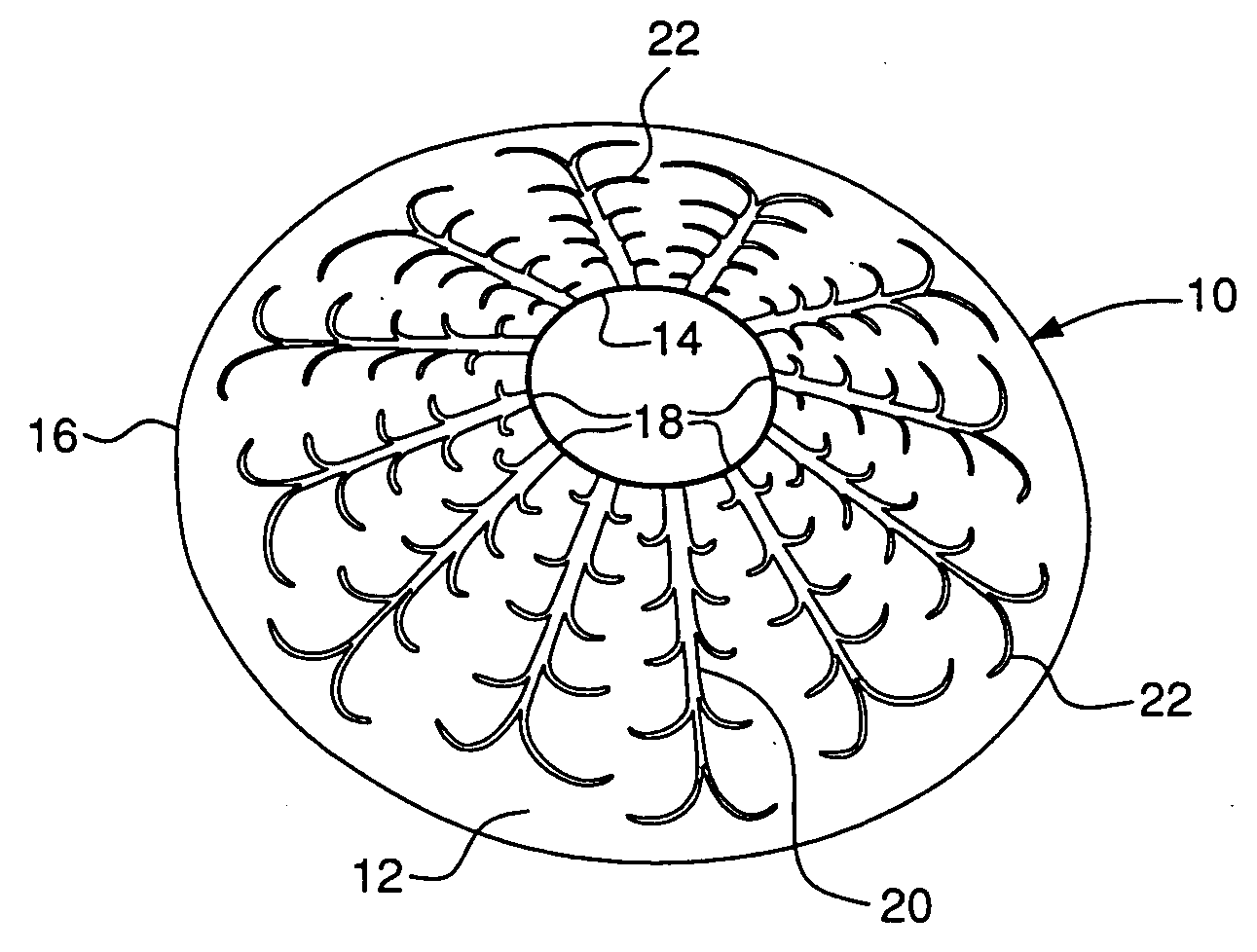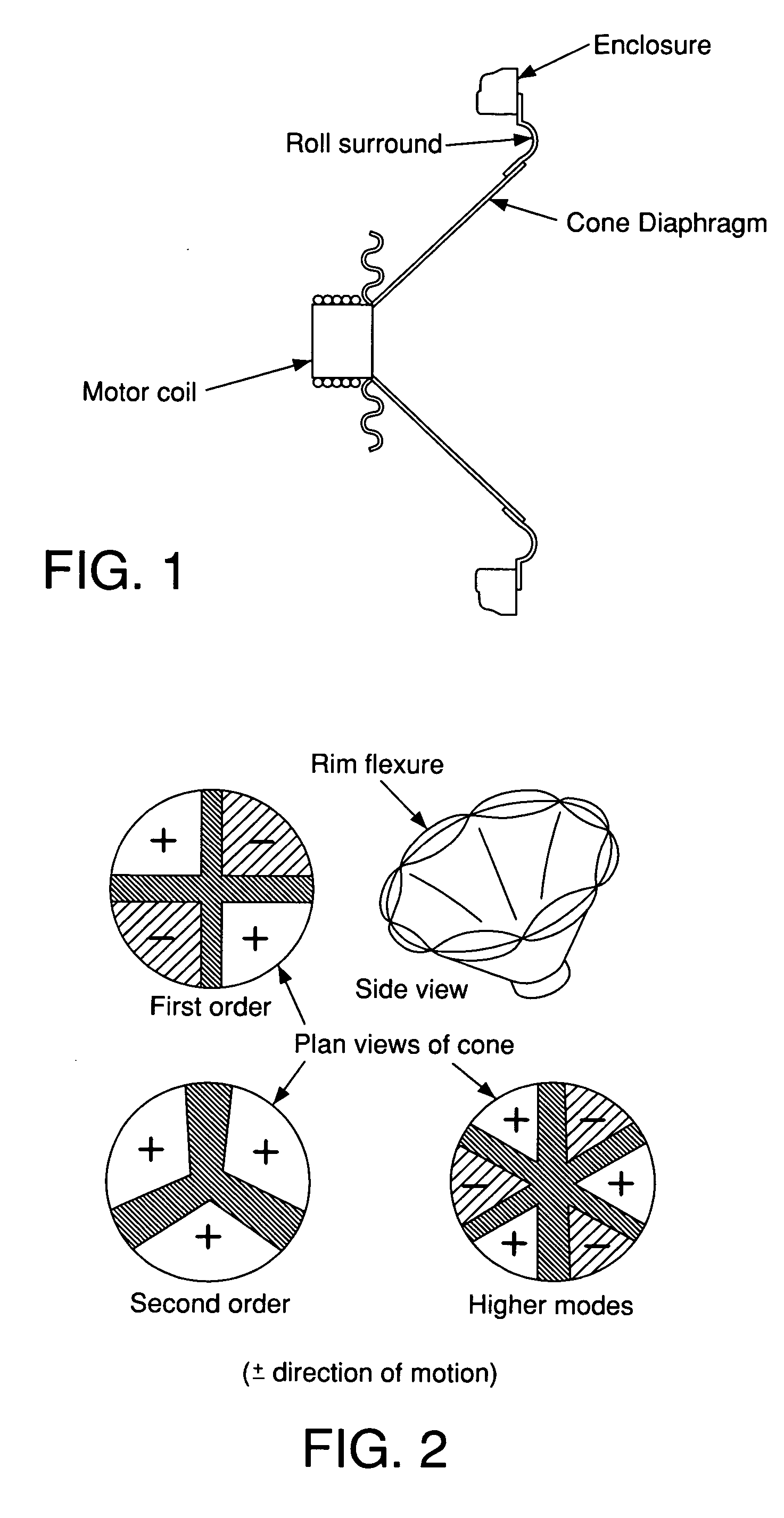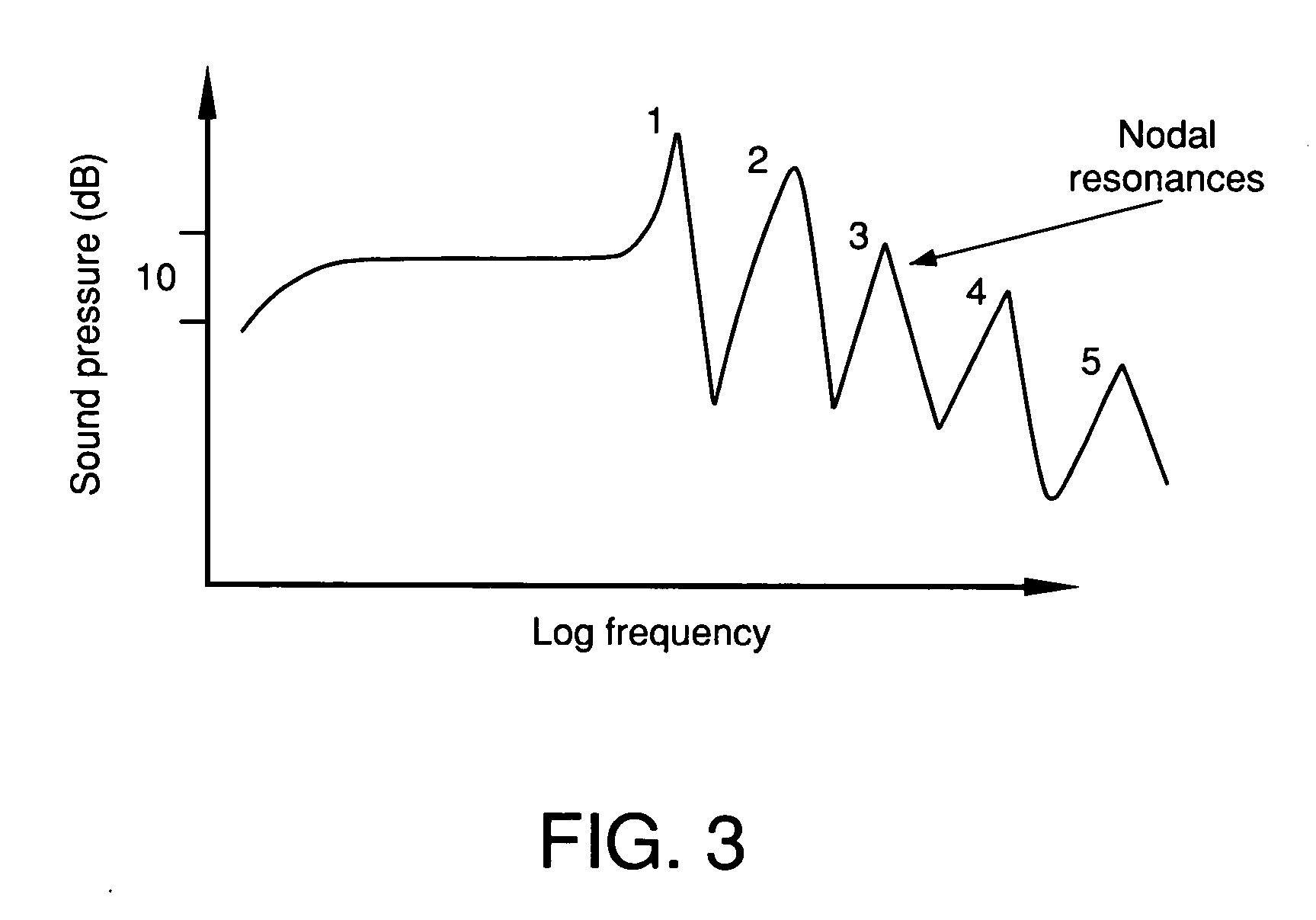Audio loudspeaker
a loudspeaker and audio technology, applied in the direction of transducer details, electrical transducers, electrical apparatus, etc., can solve the problems of limiting the usable operating frequency range of the dome speaker driver, large peaks and dips in the frequency response of the traditional dome speaker driver, and instability
- Summary
- Abstract
- Description
- Claims
- Application Information
AI Technical Summary
Benefits of technology
Problems solved by technology
Method used
Image
Examples
Embodiment Construction
[0049] The present invention describes the use of a conventional electro-dynamic motor as the excitation force on the diaphragm similar to that shown in FIG. 1. Such a motor is comprised of a voice coil wound on a voice coil former, held in a strong magnetic field by the use of a “spider” support and the diaphragm roll surround. This type of electro-dynamic speaker is by far the most prevalent type in use today. However, the design principles described herein for resonance control are also applicable to other electro-motive techniques such as those employed by electrostatic speakers.
[0050] Referring to the drawings, there is shown in FIG. 11 a first embodiment of a loudspeaker diaphragm constructed in accordance with the present invention. The diaphragm, identified generally by reference numeral 10, is constructed as a cone-type diaphragm comprised of a conical pressure wave radiating surface 12 having an inner edge or apex 14 and an outer edge or rim 16. As is conventional, apex 1...
PUM
 Login to View More
Login to View More Abstract
Description
Claims
Application Information
 Login to View More
Login to View More - R&D
- Intellectual Property
- Life Sciences
- Materials
- Tech Scout
- Unparalleled Data Quality
- Higher Quality Content
- 60% Fewer Hallucinations
Browse by: Latest US Patents, China's latest patents, Technical Efficacy Thesaurus, Application Domain, Technology Topic, Popular Technical Reports.
© 2025 PatSnap. All rights reserved.Legal|Privacy policy|Modern Slavery Act Transparency Statement|Sitemap|About US| Contact US: help@patsnap.com



